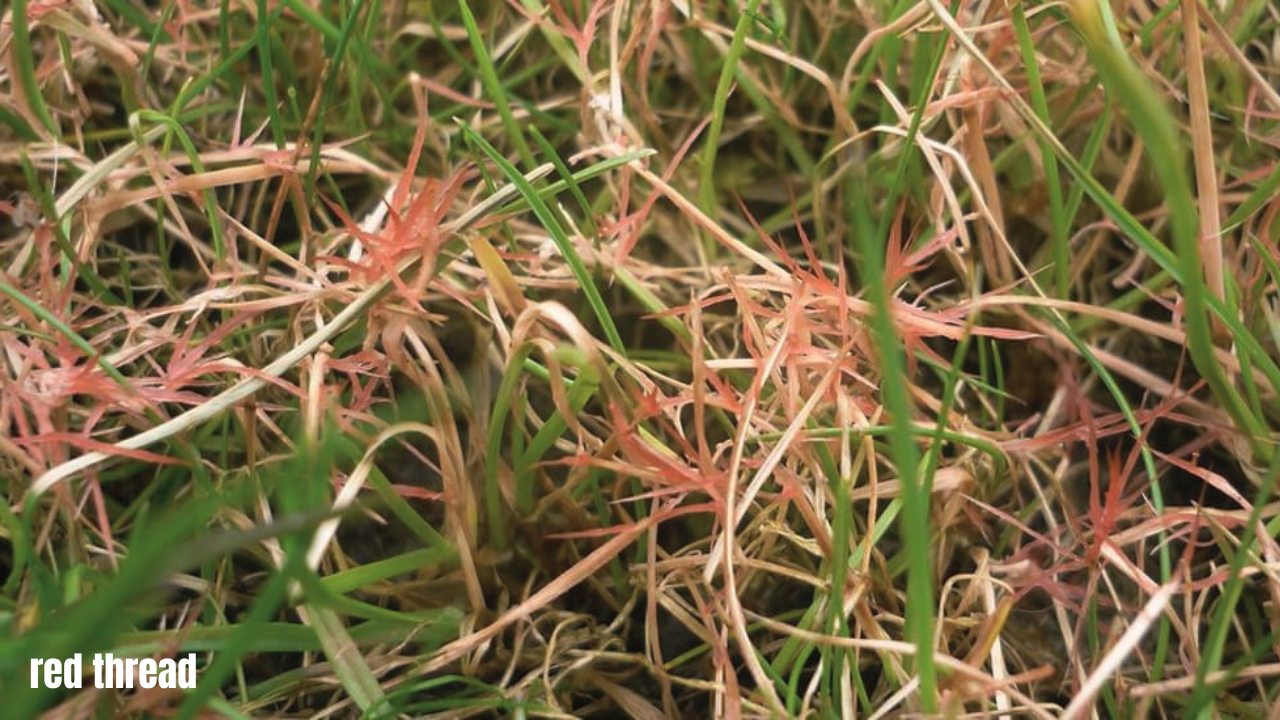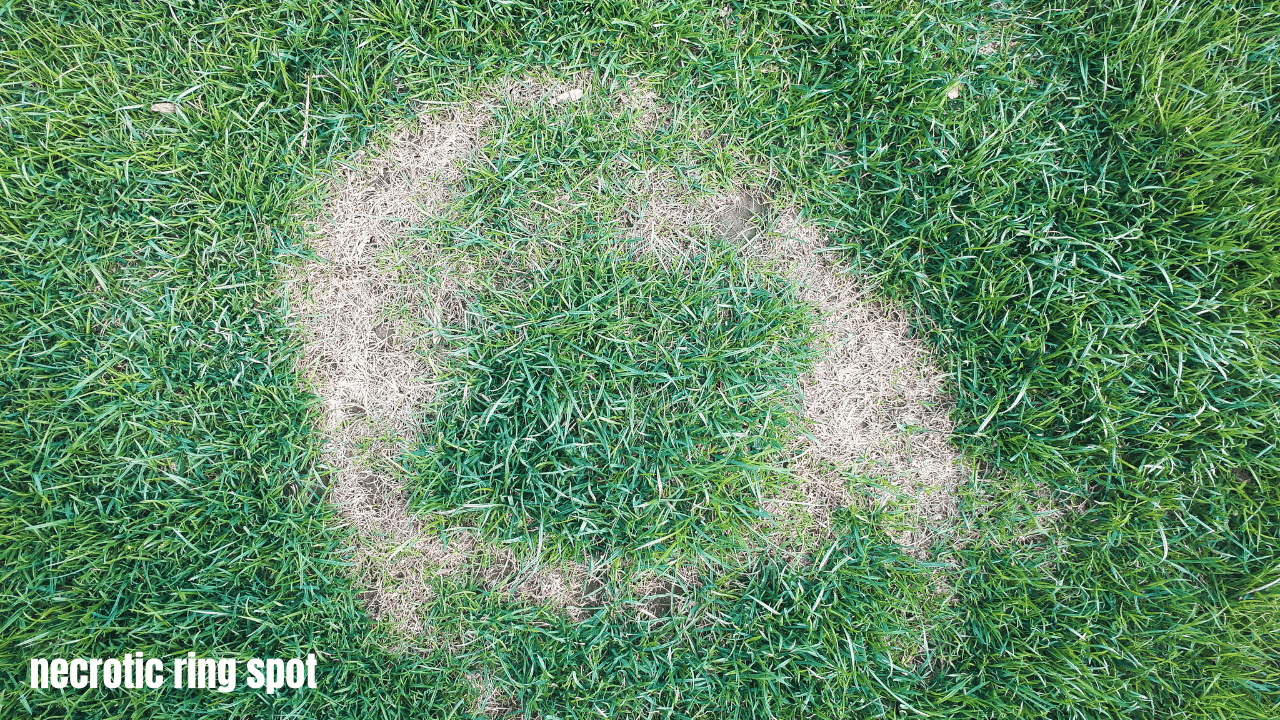When you notice bare spots and yellow crops on your lawn, you may be inclined to think you only need to fertilize the yard, and it'll be back to its formal glory. In some cases, that could work, but if you're dealing with fungal-related lawn diseases, you may have to do more than routine maintenance activities.
While this sounds somewhat intimidating, we'll help you with lawn fungus identification by teaching you what the most common lawn fungi look like. Hopefully, you can identify and treat the issue before they ruin your entire lawn and make it look like something out of a post-apocalyptic movie.
Most Common Fungal Lawn Diseases
Here we go...
Brown Patch

Brown patch is brought upon by Rhizoctonia fungi, considerably one of the most common lawn diseases in cool-season grass species. But, this doesn't mean warm-season grasses cannot be prone to this disease too. This fungus shows as large spots of grass that seem dry or dead, with circular or irregular circle patches up to 3 ft. wide. (Related: Here’s How You Can Revive Dead Grass Effectively)
You'll find that brown patch usually starts small (which can be unnoticeable to the naked eye), but when overlooked, they can get out of control in no time. This makes it crucial to detect and treat it as soon as possible.
Avoid overfertilizing or overwatering your lawn to prevent brown patches from developing on your lawn. It will only help the fungus to spread rapidly. If you're dealing with a current brown patch case, you can use a fungicide specifically formulated to eliminate Rhizoctonia (with fludioxonil as the active ingredient).
Fairy Ring

Fairy Ring is a notorious lawn fungus that may affect many turfgrass species with its unique ring shape and signature dark green or brown color. The severity of the infestation will vary depending on how you mow, water, and take care of your grass. For reference, there are over 40 fungi species that cause fairy rings. When left untreated, it can ruin the lawn you've worked so hard to tend after.
Generally, there are three prevalent types of fairy rings– but the most destructive ones appear to be extensive and irregular. These have dark green to tan colors, with a signature puffball look along the circle. Fairy rings can negatively impact the condition of your turfgrass and soil. To address the issue, aerate the area and introduce a wetting agent. Keep the lawn adequately watered and fertilized before reseeding or growing new sod.
Dollar Spot

The next common lawn fungus you need to watch is the dollar spot caused by Sclerotinia homoeocarpa. Homeowners with centipede grass, fine fescue, and perennial ryegrass are at an increased risk of dollar spot.
This lawn fungus thrives in the summer months– and may ruin your entire lawn when overlooked. Fortunately, it is easy to determine the presence of dollar spot as it takes on the appearance of signature tan circles in clusters. Experts recommend using a nitrogen fertilizer to control the dollar spot. But if you want to use a fungicide, this can help you speed up the recovery of the infested lawn. (Related: 8 Best Fungicides for Lawns: Treatment & Prevention)
Red Thread

Caused by the fungus Laetisaria fuciformis, the red thread is a common lawn fungus in the northern states (warm days and moist evenings). Though this fungus does not harm your yard severely, it will make the grass more prone to other diseases and pests. It takes on the appearance of noticeable red patches with visible red strands. As you take a closer look, its grass blades are usually bleached.
If you want to correct a red thread infestation on your lawn, it's best to avoid using chemicals. Instead, fertilize your yard with a nitrogen-rich product and aerate the soil. But if the damage is extensive, consider using a fungicide with strobilurins.
Pythium Blight

Pythium Blight is an unsightly lawn disease caused by several Pythium fungi: pythium aphanidermaturm, pythium graminicola, and pythium ultimum. This lawn fungus is also known as grease spot, spot blight, or cottony blight. This targets cool-season grasses during the scorching, humid months of the summer season.
To spot Pythium blight, look for orange-colored spots scattered over your lawn. The outer edges will have visible light gray rings in the early morning. Given high humidity levels, these spots will develop fluffy mycelium masses which resemble cobwebs. To get rid of Pythium blight on your lawn, use a fungicide formulated with mefenoxam. This can also be used as a preventative to avoid dealing with the problem in the future.
Pink Snow Mold

Don't be fooled by the name. Pink snow mold only takes on the pink color in a short time. This lawn fungi disease is common in cool and humid regions (Pacific Northwest). The Microdochium nivale fungus causes it.
If you see the white or pink cob-like coating on your matt or straw-colored grass, that may suggest pink snow mold activity. It is usually active in the early spring once the snow melts. And once the weather starts to warm, these spots will shrink. Homeowners dealing with a yearly pink snow mold issue can look into applying thiophanate-methyl fungicide to prevent the mold from taking over the lawn.
Gray Snow Mold

Various species of Typhula fungi cause gray snow mold, which tends to flourish after the snow melts and the soil is damp and cold. It can still grow without snow as long as the weather is cool and moist.
Gray snow mold can be identified through its infection centers, typically gray-colored and 6 to 12 inches wide. The difference between gray and pink snow mold is that the turf is matted by a gray mycelium made of a material like a cobweb.
Just like pink snow mold, the turf will turn back to green when the fungus is all dry, and the temperature warms. Lightly rake the infected area to aerate the lawn and mow as usual. When the grass dries out after several mowing, rake out the thatch and trim lower than you usually do until there is no more visible mold.
Summer Patch

Magnaporthe poae fungi cause the unpleasant summertime disease known as "summer patch," primarily affecting cool-season grasses. Although the damage is likely not noticeable until the grass is under its highest stress in late summer, the fungus begins its process in the late spring or early summer. There is not much you can do once the damage manifests itself in the late summer, which is why prevention is crucial.
The summer patch is identified by its 2-inch wilted patches of grass that eventually turn yellow or brown. The grass typically withers from the tip down. The more likely you save the turf, the earlier you can detect the summer patch forming.
There are no chemical treatments for the fungus once you detect the 2-inch dark-green wilted areas because the fungus' path of devastation has already been started. The only thing you can do to assist your lawn recovery is to enhance your irrigation. You can prevent the return of the summer patch by using a propiconazole fungicide when the soil temperature becomes 65°F or the following late spring.
Necrotic Ring Spot

Ophiosphaerella korrae fungus causes necrotic ring spot, which can severely affect any lawn, particularly harming the Kentucky bluegrass. It destroys the root system of your property and feeds on thatch, dead lives, and even the soil of your yard. The necrotic ring spot usually appears in cold and wet months or fall or spring.
Like many other lawn diseases, it first manifests as thinning grass that gradually turns yellow or pale green. The pattern of this severe lawn disease is a dead giveaway since it typically leaves behind 3- to 15-inch rings in your yard that resemble frog's eyes. These patches can occasionally reach up to 3 feet wide. This pattern eventually causes the grass to die.
Maintenance is the ideal way to decrease necrotic ring spots. This involves regular aeration to promote deep root development, proper irrigation, and a balanced nitrogen fertilization plan. It all comes down to timing and temperature if chemical treatment of necrotic ring spot is needed. You must apply a fungicide when the fungus is most active, between 60 and 70 degrees F in the top 3-inch soil. The fungicide will be most effective when administered just before or after irrigation because this fungus affects the root level.
